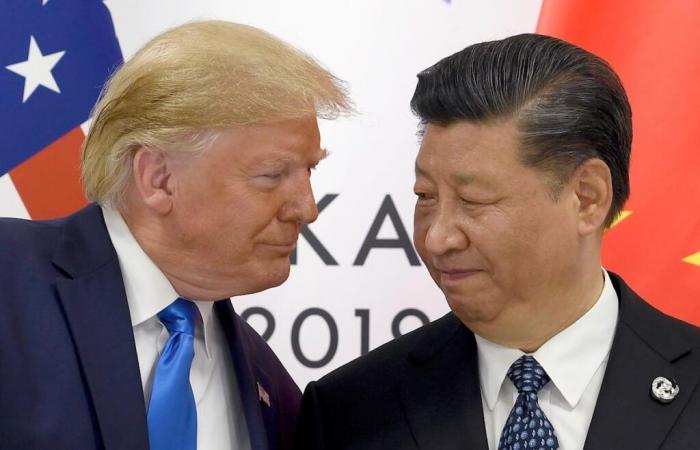Washington (AP) – The more President Donald Trump speaks about his efforts to reach agreements with the United States business partners, the more confusing the panorama of the tariffs becomes. His team seems to agree with that and has said that Trump is using “strategic uncertainty” in his favor.
Trump said the United States does not have to sign any agreement, but also that he could sign 25 of them right now. He said that he is looking for fair agreements for all parties, but that he does not care about the markets of other countries. And he commented that his team can sit down to negotiate the terms of an agreement, but also that he could simply impose a set of tariffs on his own.
“I am having trouble understanding it,” said Chad Brown, principal researcher at the Peterson Institute of International Economics, in an email.
On Wednesday night, Trump published on his social media site that he will hold a press conference on Thursday morning on an “important commercial agreement with representatives of a large and very respected country”. He added that it will be “The first of many !!!”.
Although Trump’s team presents his best -selling book “The Art of the Deal” (“The art of negotiating”) as proof that he has a master plan, much of the world is in suspense. That has meant a volatile stock market, hiring freezing and all kinds of uncertainty, even while Trump continues to promise that new factories and jobs are on the horizon.
This is a look at how trade negotiations could develop:
Trump still wants tariffs
As part of any agreement, Trump wants to maintain some of his tariffs. He believes that import taxes can generate massive income for a very indebted federal government, although other countries see that the objective of achieving an agreement is to get rid of tariffs.
“They are a beautiful thing for us,” Trump said recently about tariffs. “If you can use them, if you can get yours using them, it will make us very rich. And we will be paying the debt, we will lower your taxes very substantially because so much money will be collected that we can lower your taxes even beyond the reduction of taxes you are going to receive.”
So far this year, the United States government has raised 45.9 billion dollars from tariffs, approximately 14,500 million more than last year, according to the Bipartisan Policy Center. This income could drastically given the base tariff of 10%, the 145% rate charged to Chinese products and rates of up to 25% in steel, aluminum, Mexican and Canadian imports and imports.
To achieve Trump’s objectives to pay the debt of 36 billion dollars and reduce income taxes, their tariffs would have to raise at least 2 billion dollars annually without causing the economy to collapse in ways that lead to lower fiscal income in general. That would be almost impossible mathematically.
How do negotiations work?
The Republican government has said that 17 of its 18 main commercial partners have essentially presented them with terms of terms, which list the possible commitments they are willing to do. To agree a mutual understanding of the terms would be only the beginning of any commercial negotiation.
But foreign leaders have said that it is not clear exactly what Trump wants or how the agreements could be encoded in lasting treatment. They also know that Trump approved the treaty between Mé
during a meeting with Trump on Tuesday, Canadian Prime Minister Mark Carney suggested that the next version of that agreement would need to be strengthened to avoid repetition of tariffs related to fentanyl imposed this year by Trump, which were considered by Canada as arbitrary.
“Some things about this will have to change,” said Carney.
Can the United States reach an agreement with China?
The 145% tariffs on China, and the 125% tariffs on the United States that Beijing imposed in response, are closely loom the negotiation process. The Treasury Secretary, Scott Besent, acknowledges that these tariffs are not “sustainable.”
The first negotiations between the United States and China are scheduled to start this weekend in Switzerland, but they will probably be limited to finding ways to reduce enough tensions to carry out significant negotiations.
The key issue is that China is the main manufacturer in the world, which also makes it a leading exporter of ways that can supplant national industries. Because China suppresses internal consumption and focuses on production, the rest of the world buys what it produces because there is not enough domestic demand. The United States wants to rebalance trade, but it has also done so through tariffs to countries that could be its natural allies in the defense of its automotive and technological industries against China.
“Obviously, in this commercial puzzle, China is the biggest piece,” Besent said this week. “Where do we find China?”
The spokesman for the Chinese Ministry of Foreign Affairs, Lin Jian, has suggested that a significant way for the Trump government to initiate the negotiations would be to moderate its rhetoric and the punitive taxes to imports.
“If the United States really wants to solve the problem through dialogue and negotiation, it should stop threatening and pressing and establishing a dialogue with China based on equality, respect and mutual benefit,” Lin said Tuesday.
When asked on Wednesday if it would reduce tariffs to China as a condition for negotiations, Trump replied: “No.”
The president also played the statements of the Chinese government that his government sought negotiations in Geneva. “Well, I think they should return and study their files,” Trump said.
Will Congress need to approve an agreement?
Not necessarily.
Trump unilaterally imposed his universal tariffs without consulting Congress, using the International Emergency Emergency Powers Law of 1977 to do so, which has led to multiple demands. The Government also maintains that any agreement to change rates would not need the approval of Congress.
Previously, US presidents, including Trump in their first term with their “phase one” agreement with China, could only negotiate “more limited agreements that have focused on select bilateral trade issues and tariffs”, according to a report of the Congress Service of the Congress updated this April. Other examples of limited agreements include a 2023 agreement on critical minerals and a 2020 agreement on digital trade with Japan.
The challenge is that Trump has also made non -tariff barriers, such as cars safety regulations and value -added taxes charged in Europe, part of their negotiations. He wants other countries to change his non -tariff policies in exchange for the United States to reduce the new tariffs he introduced. Other countries, in return, could object to the United States subsidies to their companies.
In theory, the approval of the House of Representatives and the Senate would be needed to complete an agreement that would address “non -tariff barriers and would require changes in the United States Law,” says the report of the Congress Research Service.
Is it really an agreement if Trump simply imposes it?
If other countries do not satisfy it, Trump has suggested that he will simply make some type of internal agreement and establish a tariff rate, although technically did that with his taxes implemented during the “Day of Liberation” on April 2. The imports to imports announced by Trump then led to a massive sale in the financial market that led him to Pausar some of his new tariffs for 90 days and collect the lowest base rate of 10% while the negotiations are carried out.
It seems that Trump will agree not to impose originally threatened tariffs if he believes that other countries are making adequate concessions, which essentially means that the United States does not yield anything because tariffs are new. But Trump could also withdraw his tariffs without necessarily getting much in return.
“Trump is known for making lush demands and then retreating as negotiations advance, so we will see how long it remains with its formula,” said William Reinsch, main advisor to the Center for Strategic and International Studies, a research institute in Washington. “But so far it is quite clear that the countries that come and want a ‘normal’ commercial negotiation with both parties making substantive concessions are being rejected.”
___
This story was translated from English by an AP editor with the help of a generative artificial intelligence tool.






